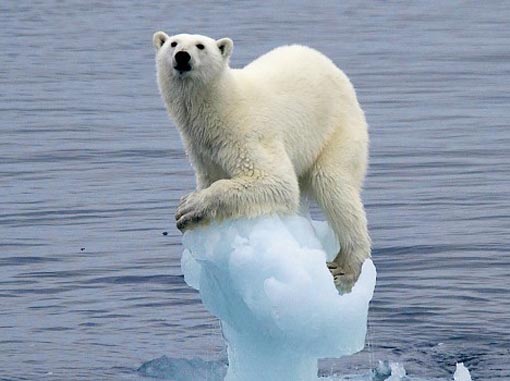For thousands of years polar bears have lived a great life in the Arctic. Polar bears have been sought out by hunters, not just the Inuit who live in the North. Polar bears have been over hunted by people looking for the big trophy. Eventually, in the 1970s, the over hunting was brought under control by the International Agreement on the Conservation of Polar Bears and Their Habitat. Currently polar bears are in danger because global warming is causing the ice caps to melt.
Conservation of Polar BearsDid you know that polar bears are one of the largest carnivores that live on land? Their paws measure up to 12 inches across to help distribute weight when "walking" on thin ice. When the ice getts thinner, they spread their feet out and get closer to the ice to distribute more weight. Black footpads on the bottom of each paw are covered by small, soft bumps known as papillae, which grip the ice and keep the bears from slipping. Polar bear claws are thick and curved, sharp and strong, and can measure more than two inches long. They use their claws to catch and hold prey.Their claws also allows them to grip on to the ice. Polar bears have black skin under which there is a layer of fat that can measure up to 4.5 inches thick.
Polar bears success at hunting seals in a dynamic arctic environment is one sign of their brain power. "This is learned behavior and reveals that polar bears are very intelligent animals. They are highly cognitive creatures that top the food chain in polar regions. You have to be very clever to do that. Hunting and trapping a seal is no easy matter," states research scientist Alison Ames.

| Site | For What |
|---|---|
| Live Science | Extra Information |
| Global Warming | image |
| Polar Bears International | information |
| Endangered Polar Bears | information |